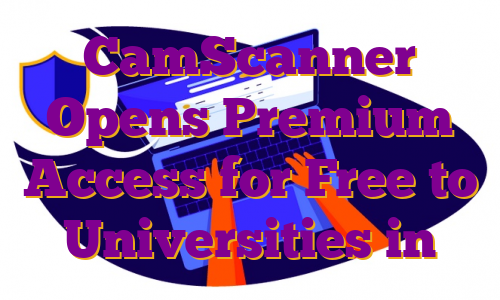It’s been a quadruple whammy for India’s hitherto booming edtech crisis. Valuations are plunging. Funding is drying up, and existing investors are no longer willing to support the carefree cash burn the sector had become used to, resulting in waves of mass lay-offs.
All this is a far cry from just two years ago. The covid-19 pandemic was precisely the catalyst the sector needed to take off and attain escape velocity. During the two years that Indian schools were shut (the longest Covid-related school closure in the world), the edtech sector’s online learning model appeared to plug the massive gaps in the traditional education sector – both government and private – exposed by the sudden closure of schools.
As anxious parents flocked to edtech ventures in droves, demand, revenues, funding and valuations soared. As many as five new unicorns were minted in the sector. Venture funding into the sector jumped eight-fold from $500 million in 2019 to $4.7 billion ($1.9 billion by Byju’s alone) in 2020 and jumped a further 50% in 2021, with funding reaching $6 billion.
This tsunami of money in turn created a flood of me-too startups. Market estimates say nearly four out of ten startups minted in 2021 in the edtech sector aimed at the K12 space were Indian. There was much talk of the Indian edtech market reaching $30 billion by 2025 and gunning for a potential $300 billion by the end of the decade. According to VC firm BLincInvest, there were over 9,000 edtech startups in India in 2021 and the number of K12 offerings alone was expected to increase 6.4X in 2022.
That was in 2021. 2022, however, is presenting a very different picture. If the re-opening of schools has sent a lot of its customers back to the traditional option, its headlong growth has been halted. Worse, an avalanche of consumer complaints about questionable marketing practices, including tied loans from shadow lenders with all the nasty clauses hidden in the fine print, forced the government to come up with an advisory in December 2021 warning consumers against malpractices by edtech players.
“It has come to the notice of the Department of School Education and Literacy that some edtech companies are luring parents in the garb of offering free services and getting the Electronic Fund Transfer (EFT) mandate signed or activating the Auto-debit feature, especially targeting the vulnerable families,” the advisory noted. The long list of don’ts specifically warned consumers from accepting any auto-debit mandate for loans arranged by the edtech firm through partners. “Avoid automatic debit option for payment of subscription fee: Some ed-tech companies may offer the free-premium business model where a lot of their services might seem to be free at first glance but to gain continuous learning access, students have to opt for a paid subscription. Activation of auto-debit may result in a child accessing the paid features without realizing that he/she is no longer accessing the free services offered by the edtech company,” the circular notes.
As consumer awareness – and unhappiness with the questionable marketing tactics adopted by most players – grew, the bottom fell out of the loan-funded customer acquisition model. NBFCs and small-ticket personal loan providers who worked with edtech startups have reported a drastic drop in business.
This has exposed the fundamental flaw in the business projections of edtech players painting rosy pictures of unbridled growth. Yes, the market is there. According to government data, there are over 260 million students, 1.5 million schools and over 10 million teachers in India, making India the world’s largest school system. But size does not equal quality. Government schools and so-called ‘affordable’ private schools, which account for over 90% of the enrolment, suffer from massive shortcomings of infrastructure, faculty strength and quality as well as pedagogy, leaving the gate open for edtechs with their out of school learning offerings.
But affordability is another matter. A survey by Schoolnet, one of the earliest players in the edtech business, which works with both government schools and unaided private schools largely in the affordable sector across states, found that the average annual spending on school education by parents on after-school education like private or group tuition and exam prep was just ₹14,000 in government schools and ₹18,000 in unaided private schools. Only 3% of parents with children in private schools spent more than ₹50,000 a year on supplementary education. This is a far cry from the ₹25,000 to ₹125,000 that edtechs tend to target from a customer. And rising awareness and government warnings have derailed the slick marketing machines of these players, which relied more on sales talk and less of proper disclosure.
Ed-techs have responded to the rising litany of complaints from consumers and the imminent threat of a government crackdown – China, which places a similar aspirational premium on education and competitiveness and had an even bigger ed-tech sector, cracked down in 2021, restricting profits and preventing ed-techs from acquiring foreign funding or going public – has spurred India’s edtechs to form a self-regulatory body.
While a step forward, this is clearly not enough. Core to the edtech crisis is two issues: One, the reduced attractiveness of online learning (with its attached hidden cost of devices and broadband for access) when physical learning options have opened up and two, the affordability factor.
Unless the sector goes back to the drawing board to come up with an alternative delivery model – perhaps a hybrid one, starts to work with schools rather than positioning itself as an alternative and above all, cleans up its marketing act and cuts its dependence on loans to consumers to drive acquisitions, 2021 may well end up being a mere flash in the pan.
Subscribe to Mint Newsletters * Enter a valid email * Thank you for subscribing to our newsletter.
Topics
.






